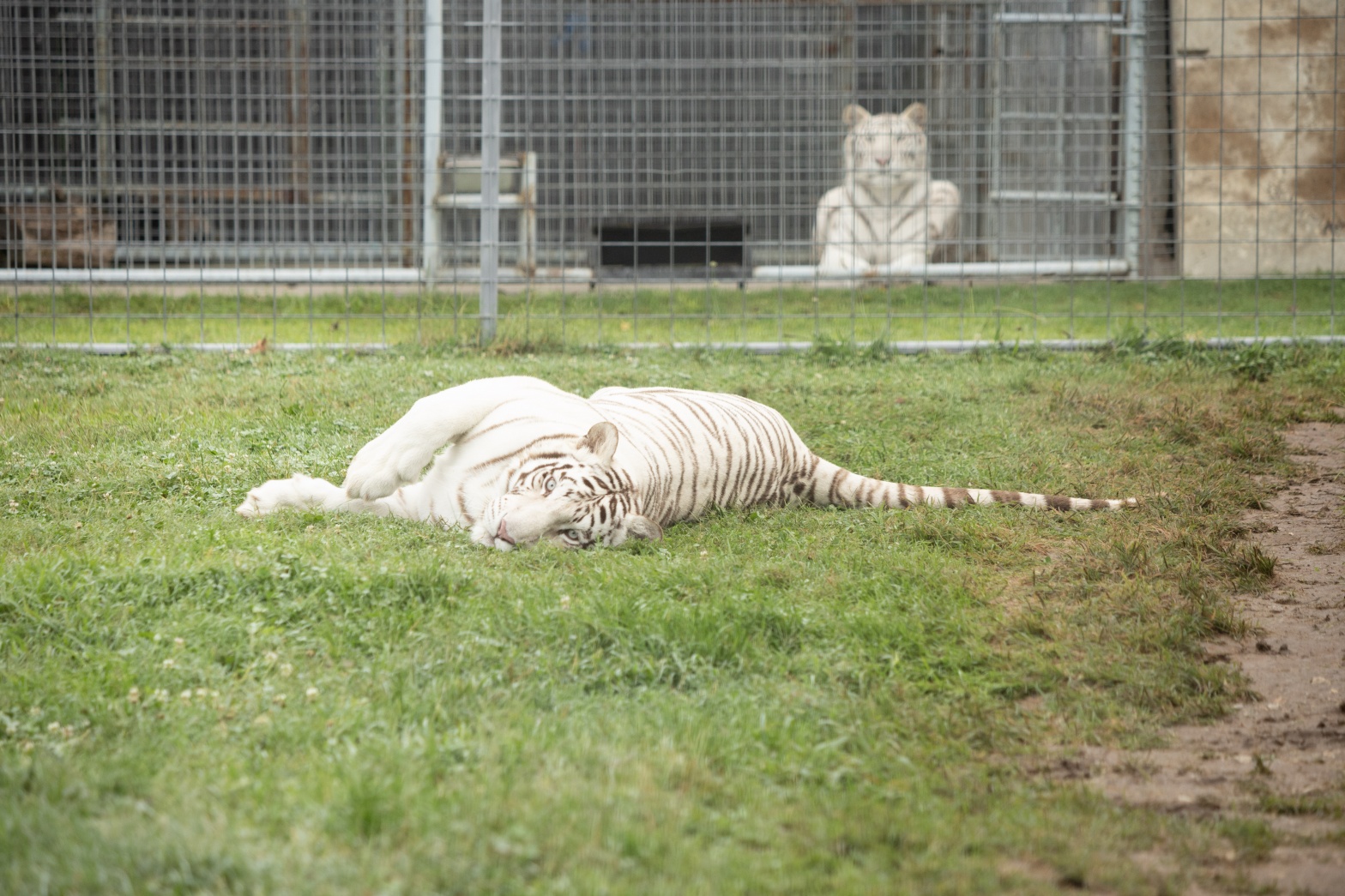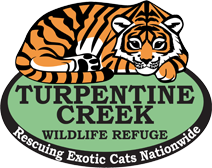
The Reality of Cub Petting
Lions, tigers, and bears (oh my!): Tourists will pay big bucks to have hands-on encounters with some of the earth’s most fearsome predators. Symbolizing strength, power, and beauty, these creatures are truly mesmerizing . . . and adorable. In the past years, the popularity of pay-to-play and cub-petting schemes has sky-rocketed. Pseudo facilities exploit the public’s desire to cuddle and care for baby animals. What a lot of animal-loving clients do not understand is that this industry is not as cute and cuddly as it appears.
There is a dark side to this industry, a side that owners (exploiters) don’t want people to see. Subsequently, most people are unaware of the underlying abuse and neglect these animals are forced to endure every single day. Furthermore, people genuinely believe that they are helping to conserve the species. They think they are merely expressing their love for tigers and lions through their intimate interactions. This, however, is not the case. On the contrary, they are actually contributing to the immense suffering of thousands of big cats and other exotic animals.
The public rarely sees what goes on “behind the scenes” of these fake zoos and pseudo-facilities. If they knew the truth, would they still “like” or “share” posts of these exploited animals?
Overview of Cub Petting Practices:
Improper Care
Cub-petting facilities see these animals as little more than props to be used for financial gain. They have no concern for the animals’ well-being and will rip cubs from their mothers moments after birth without blinking an eye. These actions do have dire consequences.
Newborn cubs are extremely vulnerable and dependent on their mother’s calcium-rich milk in order to develop properly. Without access to a constant supply of this nutrient-dense milk, cubs will more than likely develop lifelong health defects such as metabolic bone disease (MBD). MBD can cause bowed legs, brittle bones, and other development issues that, if left untreated, could very well end the cub’s life.
To ensure the cub will be hungry for a photoshoot, the facilities starve them. Sometimes, they are not even fed until someone pays to bottle-feed them. Facilities will also deprive young cubs of sleep. They keep them awake for hours on end so that tourists can repeatedly take photos or play with them.
In order for them to get the cubs to “behave,” handlers spank, scruff, berate and manipulate them. Cubs are severely disciplined for performing natural and instinctual behaviors. For the “safety” of the public, facilities will often sedate the cubs to prevent them from biting and clawing the customer. When all else fails, handlers may even declaw or defang the cubs. Are a measly few minutes of playing with a cub worth a lifetime of suffering for these animals?

Lack of safety
Cubs do not have a proper and sufficient immune system until they are about the age of sixteen weeks. During this time frame, they are highly susceptible to infection. Presently, USDA regulations allow the public to interact with cubs between four to twelve weeks of age. Furthermore, ringworm develops and spreads easily in small cages and carriers. Patrons can also get this from the animal. Finally, no one is teaching the general public how to properly feed young cubs. Feeding should always be taken seriously and performed by a trained professional. When not fed properly, there is a considerable risk of the baby aspirating, developing pneumonia, or even dying.
The banning of cub petting would eliminate all safety risks involved for animals and humans alike.
No Conservation Value
Pseudo-sanctuaries, breeding facilities, and cub-petting operations often pose as conservation organizations or legitimate sanctuaries. This couldn’t be further from the truth. Breeding endangered species in captivity with the intent of using the resulting cubs for entertainment is NOT helping with their conservation; instead, it removes the focus from the diminishing wild populations and encourages the rampant breeding of inbred animals in captivity. This misleads patrons into thinking they are helping with conservation and takes away valuable education and funds from endangered species.
Animals born into captivity and handled by humans never learn how to survive on their own. Therefore, they can never be released into the wild. Additionally, careless crossbreeding at these facilities results in significant health issues that would devastate wild populations. Handling cubs solely benefits the human who is participating in the petting. Guests are informed that the animals they are handling and interacting with enjoy this behavior. THEY DO NOT. But, this is the easiest way for these businesses to trick the public into supporting their company.
Choosing to admire big cats from afar and support true sanctuaries and conservation entities will make a huge difference for animals.
Overbreeding
In the wild, cubs spend an average of two to three years with their mothers, learning vital skills to survive into adulthood. Instead, cub petting facilities remove babies prematurely. This allows the mother to go into heat right away to produce more cubs. For this industry to thrive, there needs to be a constant flow of cubs within an eight-week age bracket. Unfortunately, there are not enough accredited facilities to accommodate the extreme amount of overbreeding. Big Cat Sanctuary Alliance (BCSA) states:
“A small amount of abused and neglected big cats are fortunate to be rescued by an accredited sanctuary as a forever home. Because they are no longer profitable, many are euthanized, sold to roadside zoos, circuses, or hunting ranches.”
Laws and Regulations
As of 2019, there are Forty-one USDA licensed facilities within the United States, as well as many more overseas. The Animal and Plant Health Inspection Service (APHIS), through the USDA, controls regulations for cub petting facilities that have a Class C Exhibitors License. This is a license for those who display animals to the public. These guidelines are incredibly loose and vague regarding limitations to cub-handling; they provide numerous loopholes for exhibitors. As a result, regulations for public exotic cub handling are up for interpretation. The USDA states within the USDA APHIS Animal Care Inspection Guide 2.131 for public contact procedures:
“Newborn and infant non-domestic cats four weeks of age or younger have special handling and husbandry needs… for regulatory purposes, A.C. generally considers big cats to become juveniles when they reach roughly twelve weeks of age. Inspectors should not use this age as an absolute cutoff date. Instead, their age should be used as a guideline when evaluating exhibits. Specifically, those that allow public contact with big cats that are at or older than twelve weeks of age. At approximately twelve weeks of age, dangerous animals, such as tigers, lions, bears, and wolves, become too big, too fast, and too strong to be used for public contact.”
Loopholes in Legislation
The USDA requires exhibitors to keep a count of all their animals, but, they do not require exhibitors to submit this data until directly before the inspector’s visit. The same inspectors who are responsible for inspecting facilities with big cats must also visit individual breeders, carnivals, zoos, circuses, research facilities, and educational exhibitors that display animals of any species to the public.
Because of the limited number of inspectors, it is easy for exhibitors to forge paperwork and continue using cubs past the legal age limit. Also, it is not uncommon for exhibitors to record an incorrect number of animals on a census, omitting the number of animals killed or sold. For these reasons, the actual number of animals in captivity in the U.S. is hard to estimate.
The Solution to Ending Abuse and Neglect of Big Cats and Exotic Animals
The Big Cat Public Safety Act is a federal bill that, if enacted, would prohibit private ownership of big cats throughout the United States, restrict direct contact between the public and big cats, and ban cub-petting entirely. TCWR encourages concerned individuals to contact their congressional representatives to advocate for this law.
To learn more, please visit TCWR’s, Advocacy Page.
How You Can Make a Difference:
- DO NOT participate in cub-petting or have your photo taken with an exotic animal baby.
- Only visit accredited sanctuaries. Visit the Global Federation of Animal Sanctuaries’ website to find true sanctuaries in your area.
- DO NOT attend attractions that include big cats or other exotic animals in their shows and performances.
- DO NOT purchase or consume exotic animal items such as purses, wine, etc.
- Speak up against cub petting!
- DO NOT participate in pay-to-play schemes. Resist the temptation!
- DO NOT follow or promote pages that endorse the exploitation, breeding, and handling of exotic animals.
- Be their voice and share with others what you have learned to protect more animals in the future.
Most importantly, educate others not to support the abuse and exploitation of exotic animals—advocate for the passing of the Big Cat Public Safety Act by contacting your local congressman and senators. Together, we can make a difference for big cats in captivity!
*Disclaimer: TCWR Education Staff provides all research and information in regards to the mission of the facility.
Please Visit Supporting Organizations and Articles:
ACTION NEEDED: USDA Again Considering Ban on big Cat Cub Handling Carson Barylak, International Fund for Animal Welfare (2016)
Are Wildlife Sanctuaries Good for Animals? Rachel Hartigan Shea, National Geographic
Kentucky Center for Investigative Reporting: Wildlife in Need
The Big Cat Handling Crisis, Big Cat Rescue, Born Free USA, Humane Society of the United States, Ian Somerhalder Foundation, International Fund for Animal Welfare, World Wildlife Fund
The Hidden Cruelty Behind Cute Exotic Cat Cub Petting Attractions, Julie Hana, The Wildcat Sanctuary (2017)
This Celebrity-Studded Instagram Petting Zoo Is a Disaster Waiting to Happen, Kate Knibbs; Gizmodo (2016)
